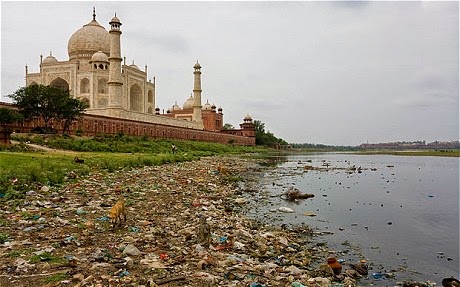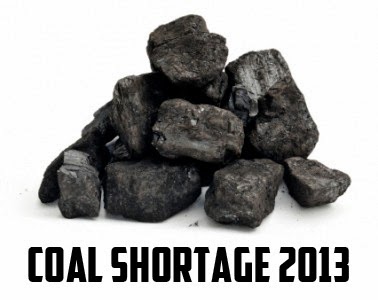Depletion of Natural Resources
- Natural resources are very important for the existence of mankind.
- They are the ultimate source of energy and nutrition.
- They also form and maintain ecosystems.
- One can’t think about life of the living organisms on the earth without these resources.
- Sun is the source of it as regards the ecosystem and fuels as regards technological human civilization.
- Today, there is already shortage of drinking water and even water for irrigation.
- Geologists are apprehensive that known reserves of minerals such as coal or petroleum may not last for very long. Most of them will be exhausted within the next 100 or 200 years.
Causes of depletion
- Non-equitable distribution
- Overuse or irrational use
- Technological and industrial development
- Population growth
1. Non-equitable distribution of
resources
- Natural resources are inequitably distributed over the world.
- In India, with water being inequitably distributed, there is increasing demand for more water supplies in water-scare areas.
- There is lack of coal supply in other states and therefore Madhya Pradesh and bihar coal reserves are over-mined to meet the need of coal supply in other states.
- A direct on land pipe line is proposed to be laid between India and Iran for petroleum supply to India.

2.
overuse
- Non-renewable resources are being over exploited to meet the increasing demand for economic and industrial growth. For the example of water. Apparently, water seems to be in abundance.
- About 95 percent is salty water found in oceans which can not be used for the domestic, industrial or agricultural purposes.
- Yamuna water in Delhi is now so polluted that it has become completely undrinkable around 60 years ago, this was the case. The Yamuna river was the only source of drinking water supply for the city.

3. Technological and industrial
development
- The functioning of a technological and industrial civilization involves a continuous flow and consumption of energy and other resources.
- The earth’s original stocks of coal and petroleum were about 6000 billion tones and 1,250 billion barrels respectively according to a report. By this time, the stock has considerably been reduced.
- Coal is used as a source of energy for industry. It is also converted into electricity purposes,. as such, the coal stock is rapidly depleting.
4. Population
Growth
- Due to ever increasing population, per capita consumption of resources is increasing at a fast rate.
- Urban population is growing at thrice the rate of national population in India.
- The ratio of natural resources and that of population is declining day by day.
Impact of resources depletion
- Shortage of materials
- Imbalance in nature
- Slackening of economic growth and
- Struggle for existence
1.
Shortage of materials
- Shortage of materials is quite understandable that depletion of resources results in shortage of materials.
- It is estimated that over 22 million hectares of forests have already been destroyed in India
- Depletion of fossil fuels such as coal and petroleum is compelling man to find alternative sources of energy.

2.
Imbalance in nature
- Depletion in natural resources is creating an imbalance in nature .
- Increasing deforestation for bringing more land under cultivation is disturbing the balance in nature.
- Due to increasing felling of trees, soil erosion is increasing, water in rivers and lake are being silted and wildlife is being lost forever.
3.
Struggle for existence
- Shortage of resources over the world has accentuated the struggle for existence.
- Due to decreased amount of irrigation water in kaveri, a struggle is going on between Karnataka and Tamil nadu
4.
Slacking of economic growth
- Production of goods and services is the base of economic growth and is possible on the supply of raw materials and energy resources.
- The economic growth of country is dependent on the availability such as gold, coal, even new varieties of fruits.
What is conservation ?
- Conservation is the wise management of natural resources for present and future use and enjoyment.
- Conservation includes the wise use of resources that are direct benefit to man, and the maintenance of natural.
- Soil is a renewable resources – it can be used and reused if properly cares for .efforts in soil conservation are direct primarily to preventing loss of topsoil and to maintain the soil’s fertility.
- Conservation of soil also supports conservation water resources. Water runs uncontrolled over eroded and bare soil instead of seeping through the topsoil to replenish the local ground water supply; it flows the stream, rivers and low-lying areas, often causing floods.
- The prevention of diverse animal and plant life is necessary to maintain natural succession.
- A number of unprofitable organizations work for the conservation and improvement of the environment. They give educational materials for school, conduct research activities, and acquire land to preserve plant and animal life in its natural habitat, and try to influence public policy.
1.
Promotion of renewable resources
- These energy resources are known as renewable energy resources such ad tidal, solar and nuclear power.
- The rapid depletion of conventional energy resources has prompted governments and people to concentrate on finding and tapping some non-conventional energy resources on finding and tapping some non conventional energy resources that may last for long.
2.
Search for Alternatives
- Easy economical supply of liquefied petroleum gas (LPG) in rural, India can save thousands of living trees from being cut for firewood.







